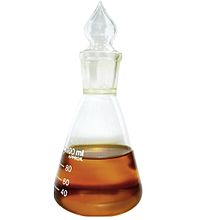
Photo from wikipedia
Abstract A Euro 6d-TEMP GDI passenger car was tested with four different fuels both in the laboratory and on the road. Bionaphtha, methanol, bioethanol, and bio-ETBE (ethyl tert-butyl ether) were… Click to show full abstract
Abstract A Euro 6d-TEMP GDI passenger car was tested with four different fuels both in the laboratory and on the road. Bionaphtha, methanol, bioethanol, and bio-ETBE (ethyl tert-butyl ether) were selected as the most promising products to be blended with petrol, in order to reduce its carbon footprint. The research aimed at measuring the exhaust emissions released when feeding the vehicle with renewable streams for fuels, to verify their conformity to the Euro standards and to compare the emissions with those released using a reference commercial petrol containing a typical level of bio-ETBE (Fuel A). Fuel B was a mixture of renewable oxygenates and hydrocarbons, containing bioethanol and bionaphtha. Fuel C contained a high level of renewable ethers (bio-ETBE) and Fuel D contained a not negligible level of renewable alcohols (methanol and bioethanol). The measurements included not only regulated pollutants, but also non-regulated pollutants and greenhouse gases. All exhaust emissions of the tested fuels were compliant with Euro 6 standard (for WLTP, Worldwide harmonised Light vehicles Test Procedure) and with Not-To-Exceed limits (for RDE, Real Driving Emissions). Compared with the reference fuel A in WLTP tests, Fuel B showed a statistically significant reduction in fuel consumption (−3.4%) and in CO2 emissions (−6.9%). Fuel C caused a decrease of CO and NO2 (−22.3% and −2.9%, respectively) and an increase in NOx emissions (+50.7%) and fuel consumption (+1.6%). Finally, with Fuel D the NOx emissions have increased (+48.1%). The emission of total aldehydes, only measured and detectable during cold conditions of the WLTP cycle, remained in a low range of values (1.5–2.5 mg/km). Based on the performed tests, none of the fuels clearly showed any criticality as a whole for tailpipe emissions. With respect to the laboratory tests, the RDE runs resulted in higher NOx and CO2 emissions and fuel consumption for all fuels compared to reference Fuel A, while CO, THC, CH4, and PN (Particles Number) emissions were lower. The percentage changes observed between laboratory and road tests were different, due to the different methodology and the intrinsic non-repeatability of the latter. Moreover, it was demonstrated how the emission factors resulting from the processing of raw measurements through a regulation-compliant software can significantly differ from those directly based on raw measurements.
Journal Title: Fuel
Year Published: 2021
Link to full text (if available)
Share on Social Media: Sign Up to like & get
recommendations!